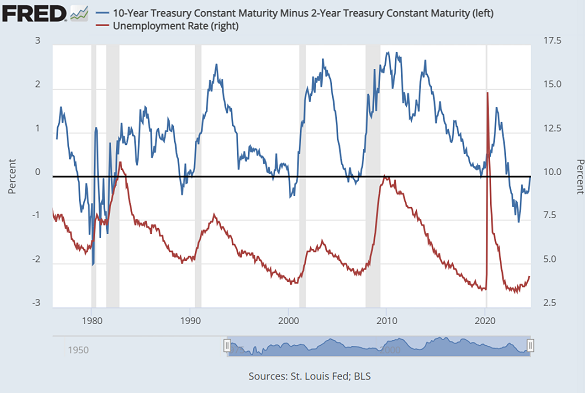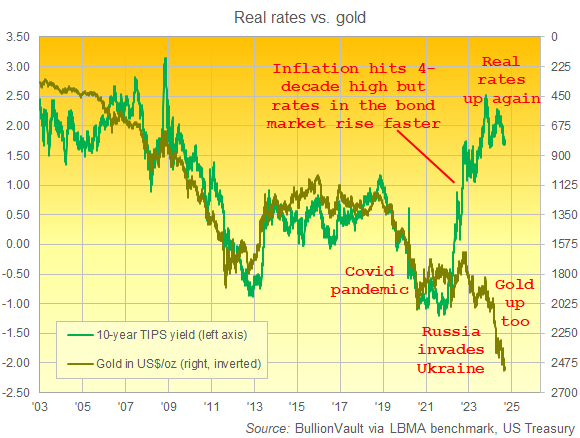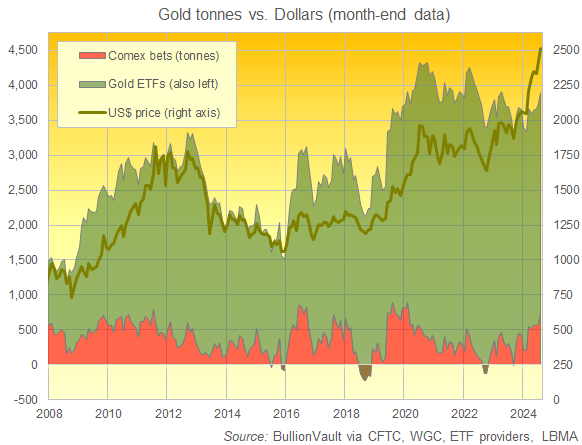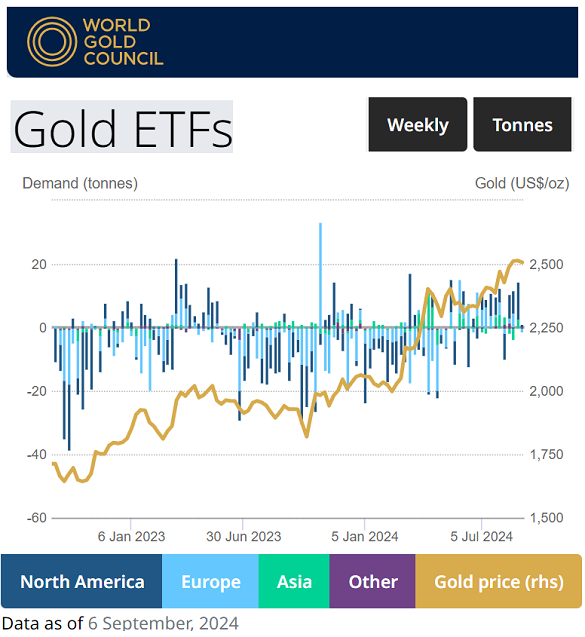Gold's Big 'Welcome Home' Hug

- Bullion prices set fresh all-time highs as US interest-rate expectations fell with the Dollar;
- Western gold ETFs and speculative betting finally rose together with prices;
- Asia's giant consumer markets in contrast turned cautious, edging prices in both China and India back to a discount versus the global gold price's new records.












 Email us
Email us